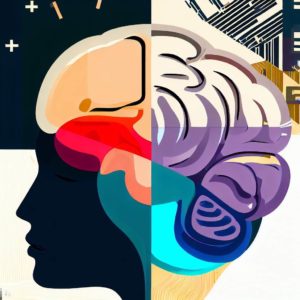
Who hasn’t had a fascinating dream that felt incredibly real? But what if those vivid experiences weren’t limited to your sleep? It might sound like something out of a sci-fi movie, but the world of psychology is starting to look at hallucinations from a completely new perspective.
Normalizing Hallucinations
Hallucinations, previously often considered only in negative contexts, are now being researched for their potential therapeutic benefits. This new approach is not as strange as it sounds, especially when we learn that hallucinations are more common than we think.
For instance, when you’re just falling asleep or starting to wake up, you might experience what’s known as hypnagogic or hypnopompic hallucinations. These are those funky little experiences that seem to be half-dream, half-reality. They’re not signs of mental illness, just part of the spectrum of human experience.
Therapeutic Potential of Hallucinogens
In fact, psychiatry and psychology have started exploring the potential of certain substances that cause hallucinations, like psilocybin (found in ‘magic mushrooms’) and MDMA (known as ‘Ecstasy’ or ‘Molly’). These aren’t just party drugs anymore – they’ve entered the realm of therapeutic tools.
Recent research showed that a single dose of psilocybin could effectively alleviate depressive symptoms in a study group. In another study, MDMA-assisted psychotherapy had better results for PTSD patients than usual treatments. So, the picture emerging is that these substances might actually have a valid place in the therapeutic setting.
Hallucinations: Essential for Therapy?
The big question here is, do we need the hallucinations for the therapy to work? It’s a hot debate. However, some experts argue that we might be barking up the wrong tree trying to separate the two. The therapeutic effects might not be just about the chemical reactions in our brains, but also about the whole experience – yes, including the hallucinations.
Climate Anxiety and Hallucinations
Let’s shift our focus to another fascinating discovery: The phenomenon of ‘climate anxiety.’ Have you heard of it? Well, it’s a real thing, and it’s on the rise. Many people, especially younger generations, feel anxious about the climate crisis and its potential impact on their future. But what if we could use our understanding of therapeutic hallucinations to help address this?
Imagine a therapeutic session, guided by a skilled mental health professional, where individuals could ‘see’ and ‘experience’ different potential future scenarios. These induced ‘hallucinations’ could offer ways to process the fear, uncertainty, and helplessness associated with climate anxiety.
Such therapy could also help people visualize positive changes they can make in their own lives and their communities. In this context, the hallucinatory experience could become a transformative journey towards empowerment and action.
The Future of Hallucinations in Therapy
Of course, more research is needed to ensure safety and efficacy. However, the possibility of using hallucinations as a therapeutic tool is an exciting development. As we continue to learn and grow in our understanding of the human mind, who knows what other revolutionary ideas we might uncover?
Final Thoughts
The key takeaway? The human brain is full of surprises and mysteries, and as we delve deeper, we might find that things we once viewed as problematic could actually be part of the solution.







